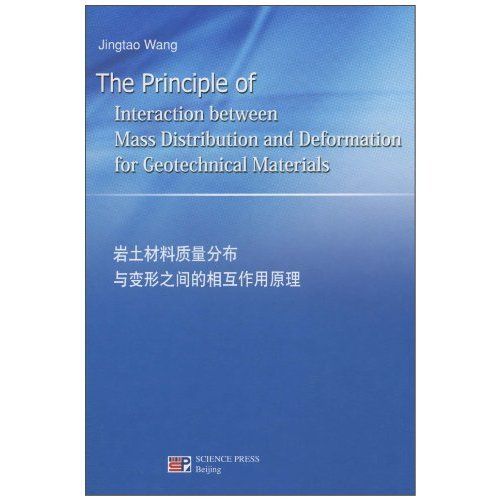《岩土材料質量分布與變形之間的相互作用原理》是2010年科學出版社出版的圖書。
基本介紹
- 書名:岩土材料質量分布與變形之間的相互作用原理
- ISBN:9787030289049
- 頁數:111頁
- 出版社:科學出版社
- 出版時間:第1版 (2010年11月1日)
- 裝幀:精裝
- 開本:16
內容簡介,編輯推薦,目錄,
內容簡介
《岩土材料質量分布與變形之間的相互作用原理》(英文版):Rock and soil are the major constituent materials of the lithosphere of the earth. They are also the most widely used engineering materials. Rock and soil exhibit some remarkable characteristics of deformation and strength behavior, such as the pressure sensitivity(or pressure dependency), shear dilatancy, dependency of stress path etc. The two phenomena of pressure sensitivity and shear dilatancy have long been known by people. However, their origin of generation is not explained rationally yet.
編輯推薦
《岩土材料質量分布與變形之間的相互作用原理(英文版)》由科學出版社出版。
目錄
Preface
Chapter 1 Introduction to Continuum Mechanics
1.1 The definition of a continuum
1.2 Deformation
1.3 Stress
1.4 Velocity fields
1.5 The classical conservation laws and field equations
1.5.1 Lagrange and Euler descriptions of the motion of a continuum
1.5.2 The equation of continuity
1.5.3 The equations of motion
1.5.4 Moment of momentumChapter 2 Fundamentals of Thermodynamics
2.1 Introduction
2.2 Basic concepts of thermodynamics
2.3 Temperature and the zeroth law of thermodynamics
2.4 Energy
2.5 The first law of thermodynamics
2.6 The second law of thermodynamics
2.7 Reversible and irreversible processes
2.8 Entropy and Clausius-Duhem inequality
2.9 Internal variables and accompanying equilibrium state
Chapter 3 Fundamental Characteristics of Deformation Behavior for Geotechnical Materials
3.1 Introduction
3.2 Pressure sensitivity
3.3 Shear dilatancy
3.4 Dependency of stress path
Chapter 4 Constitutive Modeling for Geotechnical Materials
4.1 Introduction
4.2 The plastic potential theory
4.3 The approach based on the thermodynamics of irreversible processes
4.4 The critical state and critical state line
4.4.1 Critical state
4.4.2 Critical state line
Chapter 5 The Principleof Interaction between Plastic Volumetric and Shear Strains
5.1 Background
5.2 The principle of interaction between plastic volumetric and shear strains
5.3 Effects of the plastic shear strain on plastic volumetric strains
5.4 Effects of the plastic volumetric strain on plastic shear strains
5.5 The physical meaning of the principle of interaction
Chapter 6 The Mechanism of Generation of Dependency of Stress Path and Critical State Line
6.1 The dependency of stress path
6.2 The rotational hardening
6.3 The critical state line
Chapter 7 The Constitutive Equations for Geotechnical Materials
7.1 The objective of constitutive modeling
7.2 Quantitative representation of the interaction between plastic volumetric and shear strains
7.3 Thermodynamic variables and state potential
7.4 Dissipation functional
7.5 The constitutive equations for geotechnical materials
Chapter 8 Damages of Engineering and Geotechnical Materials
8.1 The mechanism of damage of metals and some engineering materials
8.2 The damage of geotechnical materials
8.3 The description of damage evolution
Chapter 9 The Numerical Method of Constitutive Modeling for Geotechnical Materials
9.1 Introduction
9.2 The numerical method of constitutive modeling
9.3 Plasticity-based models for clay and sand under different stress paths
9.4 Concluding remarks
References

